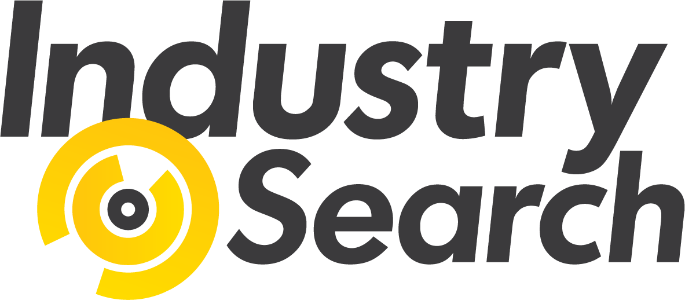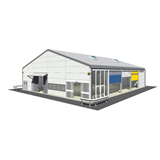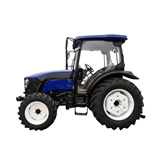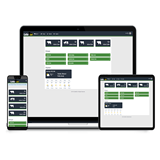Discover how to finance used farm equipment in Australia with our comprehensive buyer’s guide. Explore loan options, interest rates, and expert tips to secure the best deal for your farm’s growth.
Key takeaways
- Used farm equipment finance in Australia typically offers competitive rates, with interest ranging from 5% to 10% per annum depending on loan type and borrower profile.
- Popular financing options include chattel mortgages, hire purchase agreements, leasing, and unsecured business loans, each with pros and cons based on ownership and cash flow needs.
- Farm machinery prices vary widely — for example, a used tractor can cost between $30,000 and $150,000+, depending on brand, age, and condition.
- Lenders often require a minimum deposit of 10–20% on used equipment finance, but some low-doc options exist for qualifying farmers.
- Term lengths generally range from 2 to 7 years, with flexibility depending on equipment type and lender policies.
- Tax benefits and depreciation rules can make financing used farm equipment more affordable; farmers should consult accountants on instant asset write-offs and depreciation schedules.
- Maintenance, condition, and resale value significantly affect financing eligibility and terms — thorough equipment inspections and valuations are essential.
- Understanding total cost of ownership (TCO), including interest, maintenance, insurance, and fuel, ensures realistic budgeting beyond the purchase price.
Introduction
Purchasing used farm equipment is a common and cost-effective strategy for Australian farmers seeking to expand or upgrade their operations without overstretching cash flow. However, financing used agricultural machinery can be complex, with many options, lender requirements, and financial considerations to navigate.
This guide is designed to provide you with a thorough understanding of how to finance used farm equipment in Australia, from tractors and harvesters to sprayers and implements. We cover the main finance products, what lenders look for, costs, tax considerations, and practical tips to help you make informed decisions.
Understanding the Australian used farm equipment market
Price ranges and types of used farm machinery
Used farm equipment prices vary considerably based on type, age, brand, condition, and hours of use. For example:
- Tractors: $30,000 to $150,000+
- Combine harvesters: $50,000 to $250,000+
- Sprayers and spreaders: $10,000 to $80,000
- Implements (ploughs, seeders, balers): $5,000 to $60,000
Why finance used equipment?
- Lower upfront cost: Compared to new machinery, used equipment reduces capital outlay.
- Faster asset acquisition: Financing spreads the cost, enabling quicker upgrades.
- Preserves working capital: Maintains cash flow for operational needs.
- Tax advantages: Potential for depreciation and instant asset write-off benefits.
- Flexibility: Multiple finance products available to suit farm cash flows and ownership preferences.
Main financing options for used farm equipment
1. Chattel mortgage
- You take ownership immediately; the equipment acts as security for the loan.
- Interest and repayments are usually tax-deductible as a business expense.
- Common loan terms: 2 to 7 years.
- Deposit requirements: Typically 10–20%.
- Suitable if you want to own the equipment outright while spreading payments.
2. Hire purchase (HP)
- You hire the equipment during the loan term and gain ownership once final payment is made.
- Higher monthly repayments compared to chattel mortgages.
- Often includes interest, fees, and GST in repayments.
- Useful if you prefer fixed repayments and eventual ownership.
3. Leasing
- Operating leases offer use without ownership; financial leases often end with ownership options.
- Lower upfront costs, but total payments can be higher over time.
- Equipment maintenance may be included in lease agreements.
- Ideal for farmers wanting flexibility or to avoid obsolescence risk.
4. Unsecured business loans
- No asset security required, but interest rates are generally higher.
- Faster approval and flexible use of funds.
- Suitable for small equipment purchases or when you already own significant farm assets.
5. Low-doc and finance for new farmers
- Some lenders provide low-documentation loans or specialised packages for new entrants.
- Requirements often include a business plan and projected financials.
What lenders consider when financing used farm equipment
- Equipment age and condition: Newer or well-maintained machinery has higher finance approval chances.
- Equipment type and resale value: Lenders prefer assets with strong secondary market demand.
- Credit history and farm financials: Demonstrated income stability and creditworthiness impact loan terms.
- Deposit size: Larger deposits reduce lender risk and improve interest rates.
- Loan term and repayment capacity: Lenders assess ability to service debt from farm income.
Key costs and fees associated with used farm equipment finance
- Interest rates: Usually 5–10% per annum depending on product and borrower profile.
- Establishment fees: One-off fees typically 1–3% of loan value.
- Early repayment fees: Some lenders charge penalties for early payoff.
- Valuation fees: Inspections or valuations may incur additional costs.
- Insurance requirements: Lenders often require equipment insurance to protect their interest.
Tax implications and depreciation for used farm equipment
- The Instant Asset Write-Off allows eligible businesses to immediately deduct equipment purchases under a certain threshold ($30,000 to $150,000 depending on date and turnover).
- Depreciation schedules for farm equipment follow Australian Taxation Office (ATO) guidelines, generally using the diminishing value method or prime cost method.
- Finance interest is generally tax-deductible when the asset is used for business purposes.
- Consult a qualified accountant to maximise tax benefits and ensure compliance.
Government grants and subsidies for farm equipment financing
- Various state and federal grants may assist with purchasing or upgrading farm machinery, particularly for energy-efficient or sustainable equipment.
- Check programs like the Regional Investment Corporation (RIC) low-interest loans and state agricultural grants.
- These schemes often have eligibility criteria based on farm size, location, or commodity type.
Tips for a successful used farm equipment financing application
- Prepare detailed financial documents: Include tax returns, bank statements, and cash flow forecasts.
- Obtain a professional equipment valuation: Helps establish fair market value for lenders.
- Demonstrate farm income stability: Highlight diverse revenue streams if possible.
- Understand your repayment capacity: Factor in seasonal income fluctuations.
- Shop around: Compare interest rates, fees, loan terms, and customer service.
- Maintain good credit: Pay bills and existing loans on time to boost approval chances.
Total cost of ownership (TCO): Beyond the purchase price
- Include ongoing maintenance, fuel, insurance, repairs, and registration fees in budgeting.
- Factor in downtime costs if equipment breaks down unexpectedly.
- Consider extended warranties or service packages if available.
Frequently asked questions (FAQs)
1. Can I finance any type of used farm equipment?
Most types of agricultural machinery can be financed, including tractors, harvesters, sprayers, and implements. However, lenders prefer assets that retain resale value and are in good condition. Custom or highly specialised equipment may require additional assessment.
2. How much deposit do I need for used farm equipment finance?
Deposits typically range from 10% to 20% of the equipment’s purchase price. Some lenders offer low or no deposit options, but these usually come with higher interest rates or stricter eligibility criteria.
3. What are the benefits of a chattel mortgage over leasing?
A chattel mortgage grants you immediate ownership and potential tax deductions on interest. Leasing can offer lower upfront costs and maintenance packages but may result in higher long-term expenses and no ownership until (if ever) the lease ends.
4. How does equipment condition affect finance approval?
Lenders assess age, hours of use, service history, and visible wear. Equipment in poor condition may attract higher interest rates or be declined for finance due to increased risk.
5. Can I claim tax deductions on finance interest for used farm equipment?
Yes, interest on loans used to purchase farm equipment is generally tax-deductible if the asset is used for income-producing purposes. Always verify with your accountant based on your specific circumstances.
6. Are there government grants to help with farm equipment financing?
Yes, several grants and low-interest loan schemes exist, especially for sustainable or innovative equipment purchases. Availability varies by state and farm type; research relevant programs or consult local agricultural bodies.
7. What loan term should I choose for used equipment finance?
Loan terms usually range from 2 to 7 years. Choose a term that balances manageable repayments with the expected usable life of the equipment and your farm’s cash flow cycles.
Conclusion
Financing used farm equipment in Australia is a practical way to grow and modernise your farming operations without a heavy upfront cost. By understanding your financing options, lender requirements, and the total cost of ownership, you can make strategic purchasing decisions that suit your farm’s financial health and operational needs.
Remember to prepare your application carefully, maintain thorough equipment records, and seek professional advice on tax and finance matters. Doing so will maximise your chances of securing the best terms and maintaining profitability for years to come.









-160x160-state_article-rel-cat.png)





